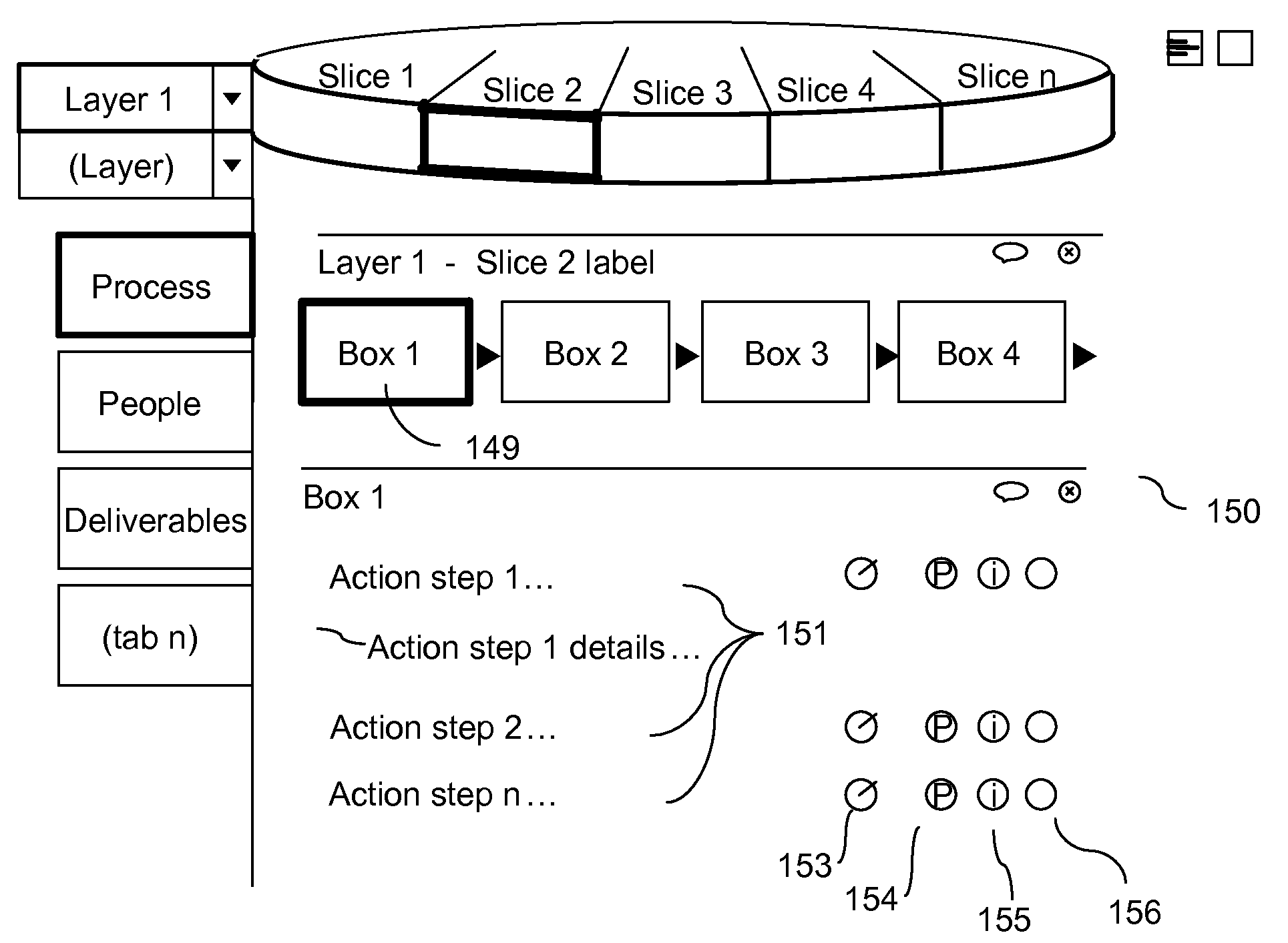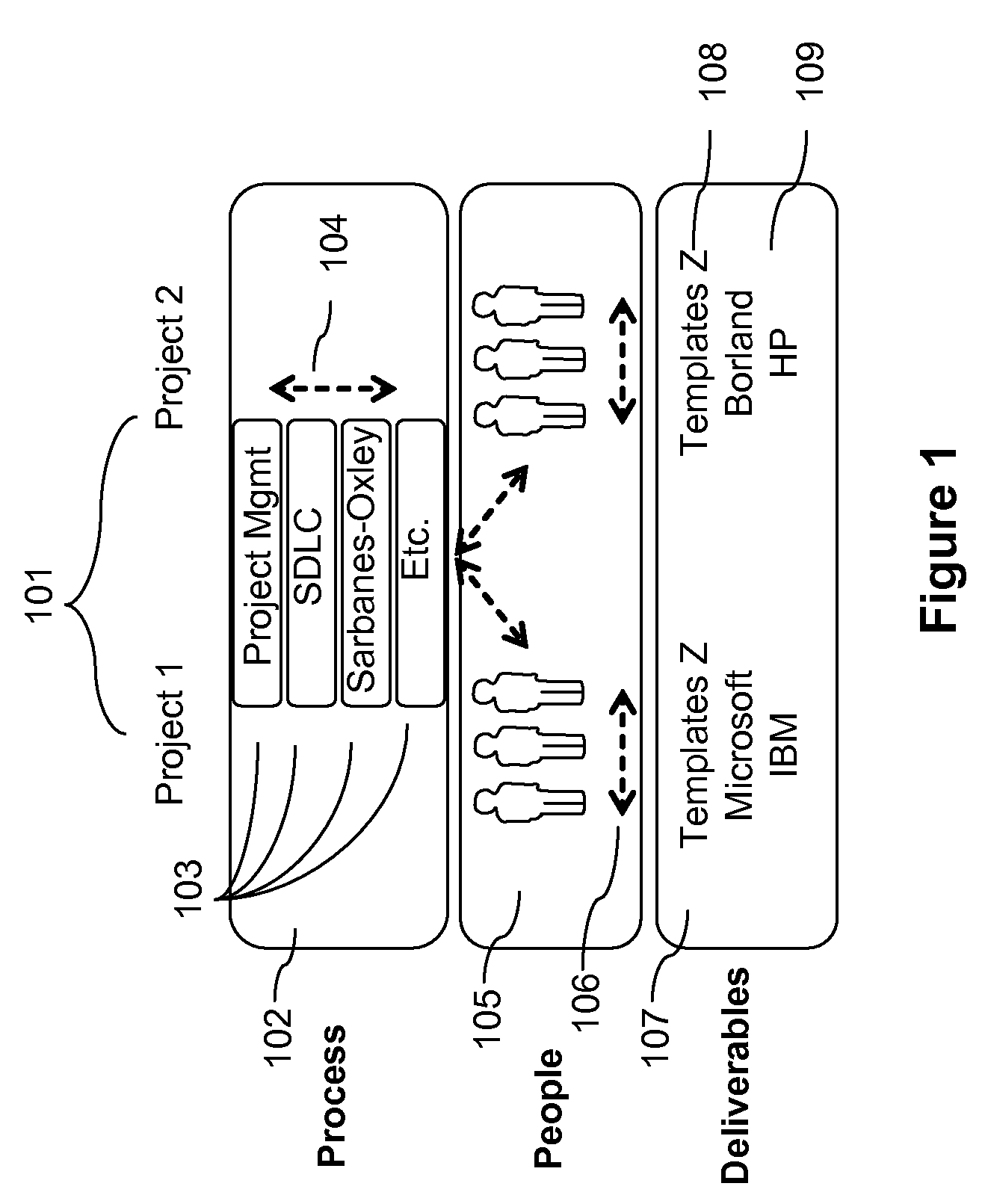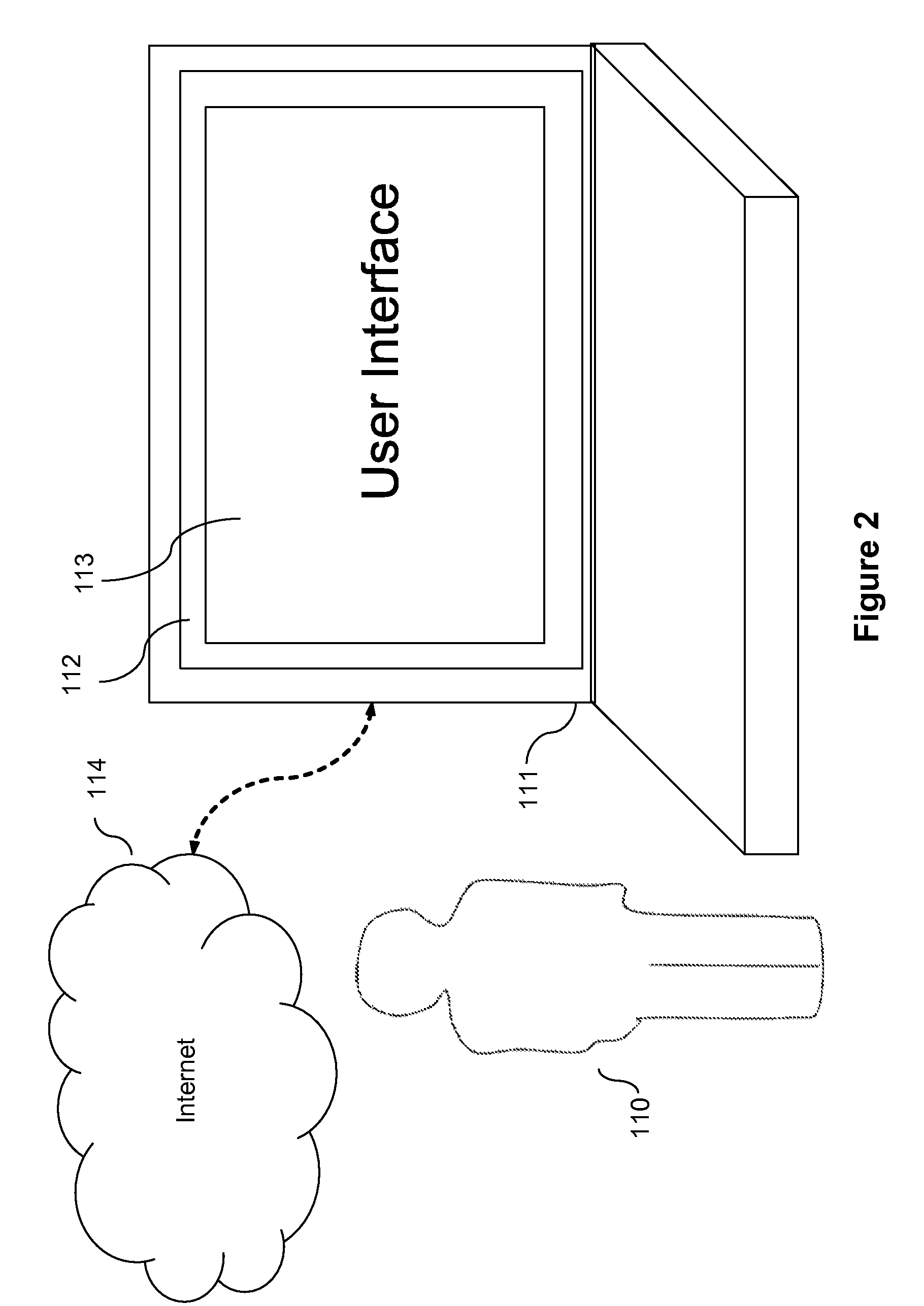System and Method of Facilitating Project Management with User Interface
a project management and user interface technology, applied in the field of project management, can solve the problems of not having the necessary knowledge or experience, difficult to integrate the different processes of different processes, and many people not spending enough time learning and reviewing the process
- Summary
- Abstract
- Description
- Claims
- Application Information
AI Technical Summary
Benefits of technology
Problems solved by technology
Method used
Image
Examples
Embodiment Construction
[0033]The figures and the following description relate to preferred embodiments by way of illustration only. It should be noted that from the following discussion, alternative embodiments of the structures and methods disclosed herein will be readily recognized as viable alternatives that may be employed without departing from the principles of the claimed invention.
[0034]A user interface is modeled for an enterprise level solution for organizations of all types that have ongoing projects. It provides a view to a central repository of best practice or process methodology content. Referring to FIGS. 1 and 4, there is shown an embodiment of the business model features (FIG. 1) that the user interface (FIG. 4.) covers. FIG. 1 is not a user interface, such as presented in FIG. 4 (User Interface 100), but illustrates an overall process model to which an interface such as illustrated in FIG. 4 is applicable, and which can be used to explain the user interface in context. FIG. 1 shows an e...
PUM
 Login to View More
Login to View More Abstract
Description
Claims
Application Information
 Login to View More
Login to View More - R&D
- Intellectual Property
- Life Sciences
- Materials
- Tech Scout
- Unparalleled Data Quality
- Higher Quality Content
- 60% Fewer Hallucinations
Browse by: Latest US Patents, China's latest patents, Technical Efficacy Thesaurus, Application Domain, Technology Topic, Popular Technical Reports.
© 2025 PatSnap. All rights reserved.Legal|Privacy policy|Modern Slavery Act Transparency Statement|Sitemap|About US| Contact US: help@patsnap.com



